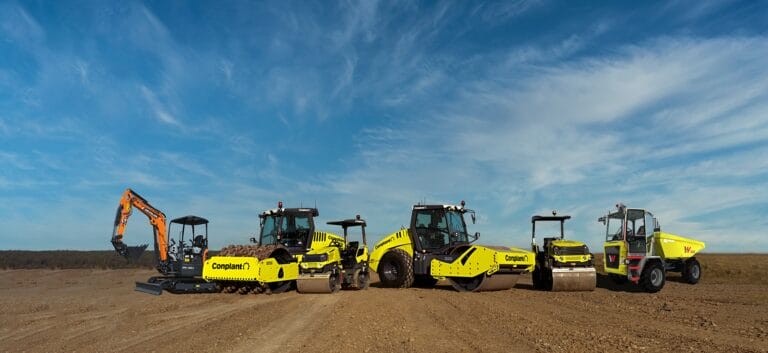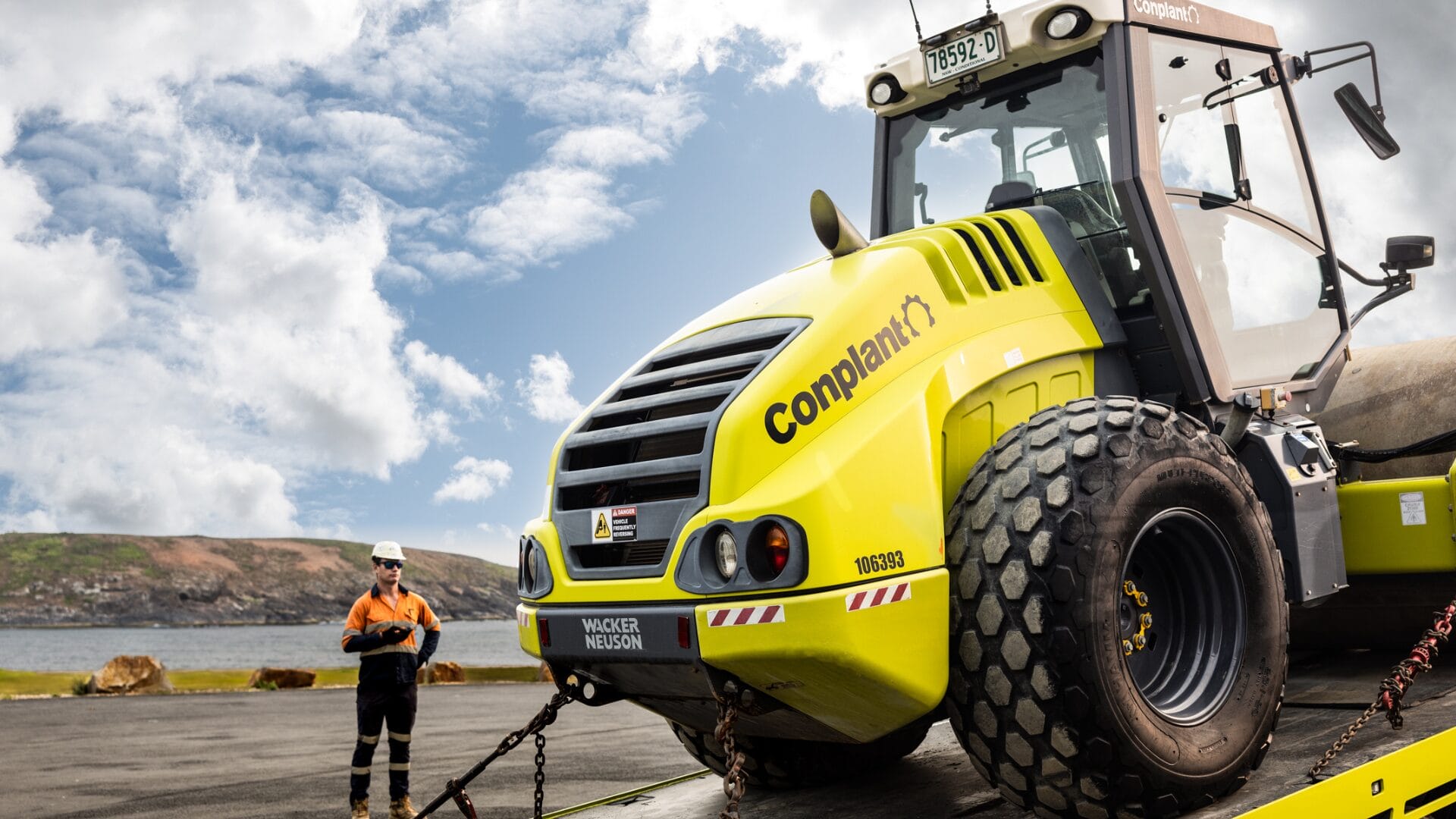The Australian construction industry has been weathering plenty of storms in recent years, both literal and otherwise. With rapid shifts in supply chains, material costs, and worker numbers — it’s fair to say a bit is going on.
To get a sense of the industry outlook and where the key opportunities lie, we reached out to a few of our key stakeholders to hear what they have to say.
Get an insider’s perspective from our leaders
Contents:
What are the 3 most significant challenges facing Australian construction in 2025?
How can current labour shortages be solved?
How can we keep more qualified people in the industry?
Is the industry showing any signs of improved supply chain resilience?
Should you have a smaller, more versatile equipment fleet? Or a larger, more specialised fleet?
What are the 3 most significant challenges facing Australian construction in 2025?
Michael: The issues I see affecting the management and operations of small and large construction businesses in 2024/25 are:
- Skills shortages
- Increased labour and equipment costs
- Regulatory and compliance pressures
Liam: From a product perspective, these are the challenges I’m seeing:
- Rising labour costs of skilled workers
- Oversupply of machinery in a competitive market
- Rising running costs of machinery
Janet: From a people perspective, I see three main challenges facing the Australian construction industry over the next 12 months:
- Labour and skill shortages (including complexity in the visa system)
- Lack of affordable accommodation Australia-wide and the cost of living
- Retaining and developing skilled workers
Industry Insight: Denita Wawn, CEO of Master Builders Australia, adds: “Despite a sizeable workforce of 1.35 million Australians, the industry has an annual exit rate of eight per cent, and we are only replacing half of those people per year. Our recent report into productivity found prolonged labour shortages are reducing industry output by $50 billion dollars and thousands of homes over the next five years… Every single builder we talk to at the moment says we need more people – and we need them fast.”
Government Insight: Julie Collins, Federal Housing Minister, acknowledges: “We know we’ve got a lot of work to do. We know we’ve got an ambitious housing target, which is why we’re getting on with the job.”
How can current labour shortages be solved?
The construction industry has grappled with labour shortages for years, but recent global events have increased the problem. Finding solutions to this issue has become more important than ever, and we asked our leaders for their thoughts on addressing this challenge.
“Addressing current labour shortages requires a multi-faceted approach. On top of skilled migration to Australia, governments and businesses must invest in training and upskilling the current workforce and enhance retention strategies. Recruitment efforts must be tailored to appeal to a wider audience and improve the working conditions and benefits for young people to take on trades.” Michael
“It’s a difficult one, but government incentives to get more young people into the industry, including women who might not have considered it and more flexible working practices on construction sites, are the two things I see as contributing positively to this issue.
Additionally, identifying in-demand skill sets and incentivising employers and individuals starting out and working with TAFEs to make learning options more flexible are other things I think will help with the shift we need to see.” Janet
Industry Insight: Jane Marsh, Build Australia, says: “Australia’s current labour shortage can be attributed to several factors, including an ageing workforce, perception issues, educational shifts, and immigration policies. These issues contribute to a rapidly growing labour shortage in the construction sector, with projections showing a peak deficit of 131,000 infrastructure workers by 2024. This scenario underscores the urgency of the situation.”
Government Insight: Simon McGurk, Training & Workforce Development Minister, states: “Securing places for 10,000 skilled workers [in WA] will help us fill the many positions that can’t be filled locally. Skilled migrants are needed to meet immediate labour shortages.”
How can we keep more qualified people in the industry?
Keeping skilled people in the construction industry will be a big challenge in 2025. With a competitive job market and changing workforce expectations, the construction sector needs to adapt to retain its best talent. Our Conplant panel offers their perspectives on strategies to improve retention.
“Creating an environment where people feel valued, challenged, and supported. A safe, healthy culture and work-life balance are critical to keeping good people involved in any industry.” Michael
“Family-friendly working conditions will go a long way to keeping good, qualified people in construction. Also, flexible working arrangements should be established to meet the changing needs of all employees where possible.
It’s also important to be supportive and flexible when life events happen so employees can navigate them and ask for what they need. Having an Employee Assistance Program and investing in manager training are also important.
Working with partners on secondments would help to broaden experience profiles. Meanwhile, making roles flexible where possible would allow companies to take account of the individual strengths, preferences, and changing circumstances of its workers.” Janet
Industry Insight: Denita Wawn, CEO, Master Builders Australia, explains: “The announcement of Fee-Free TAFE and VET places rightfully recognises the role of not-for-profit industry-led registered training organisations in training the next generation of tradies. It’s now up to state and territory governments to ensure industry-run RTOs are held on equal footing with TAFE.”
Government Insight
The Federal Government has announced it will be investing $90.6 million to bolster the skills of the workforce in the construction and housing sector.
The 2024-25 budget is expected to remove cost barriers to education and training and incentivise Australians to train in areas the economy needs them most, with $88.8 million for 20,000 additional Fee-Free TAFE training places to increase the pipeline of workers for construction and housing.
Infrastructure Magazine May 2024
Is the industry showing signs of improved supply chain resilience?
The pandemic exposed vulnerabilities in supply chains across many industries, including construction. Our team shares their observations on the current state of supply chain resilience in construction.
“Many companies are diversifying their supply chains to reduce dependency on single suppliers or regions. Hopefully, we all learnt some valuable lessons coming out of the COVID era and future governments can invest in Australian manufacturing businesses again at some point and be less reliant on the rest of the world. If we don’t revert, we will undoubtedly face the same challenges in future.” Michael
“Supply seems to be levelling out, and some costs are falling. There’s more pressure on estimators with domestic and project work to quote jobs accurately. Many contractors now buy bulk in advance to cater for multiple sites with forecasted work.” Liam
Industry Insight: Dale Gleeson, General Manager of Heavy Industries, QBE Australia Pacific, says: “Global supply chain disruptions are likely to continue, so understanding the structure and geographic concentration of suppliers can help businesses assess and identify vulnerabilities within their supply chain. We recommend businesses consider diversifying their suppliers, and when engaging new suppliers, do so with quality control front of mind, as poor-quality supplies could lead to future complications.”
Government Insight: Catherine King, Minister for Infrastructure, Transport, Regional Development & Local Government, explains: “Our government is committed to ensuring that Australia has a productive, resilient and decarbonised supply chain. The importance of Australia’s ports cannot be understated with 99% of Australia’s international trade moving through our ports, supporting 700,000 jobs across the country.”
“With emissions from the transport sector expected to grow in the coming years, it is vital that the government invests in decarbonising ports and the wider supply chain.”
Should you have a smaller, more versatile equipment fleet? Or a larger, more specialised fleet?
The make-up of a business’s fleet can significantly impact its operational efficiency, and the debate between versatility and specialisation is ongoing. We asked our team to weigh in on this topic.
“Choosing between a smaller, more versatile equipment fleet and a larger, more specialised fleet depends on several factors related to the nature of the project, operational goals, and financial considerations.
It’s tough to run a small fleet, and economies of scale are usually beneficial in any fleet. Businesses have always utilised the services of hire companies like Conplant to help navigate this dilemma.” Michael
“I believe it’s better to have a larger specialised fleet all dependent on the volume of work of course.
A medium-sized average fleet may be the correct compromise, as a larger fleet always comes with additional costs.
Smaller equipment is rapidly expanding with the ongoing urban sprawl and the increase of smaller urban worksites, so there is always a good argument for both.” Liam
Looking to bolster your construction fleet? Check out our hire range or sales range.




